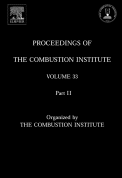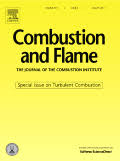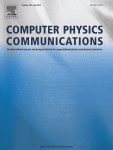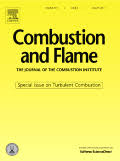
In order to understand the interactions between 2-butanol and hydrocarbon fuels in combustion chemistry, experimental and kinetic modeling investigations were performed to study laminar coflow diffusion methane flames doped with two inlet mole fractions of 2-butanol (1.95% and 3.90%) in this work. Mole fractions of flame species along the flame centerline, particularly unsaturated C2–C5 hydrocarbons, C6–C16 aromatics and some free radicals, were measured using synchrotron vacuum ultraviolet photoionization mass spectrometry. A detailed kinetic model was developed to simulate the fuel decomposition and the formation of benzene and PAHs in the investigated flames. The simulated results can reproduce the observed effects of 2-butanol addition. The reaction pathway analysis reveals that resonantly stabilized radicals, such as propargyl, cyclopentadienyl, phenyl, and benzyl radicals, are major precursors of indene and naphthalene. With the increasing inlet mole fraction of 2-butanol, the formation of these resonantly stabilized radicals increases significantly. PAHs with more carbon atoms, including acenaphthylene, phenanthrene, pyrene, and fluoranthene, are dominantly derived from indenyl and naphthyl radicals.
Keywords
Laminar coflow diffusion methane flame; 2-Butanol; SVUV-PIMS; Kinetic modeling; Formation of benzene and PAHs
How to cite
Jin, H., Yuan, W., Wang, Y., Li, Y., Qi, F., Cuoci, A., Frassoldati, A., Faravelli, T.
Experimental and kinetic modeling study of laminar coflow diffusion methane flames doped with 2-butanol
Proceedings of the Combustion Institute, 35 (1), pp. 863-871 (2015)









